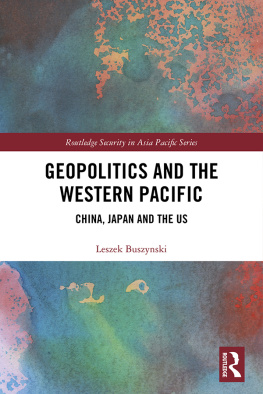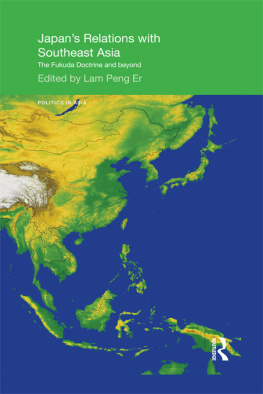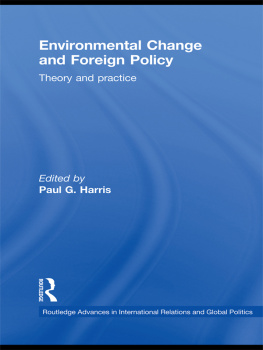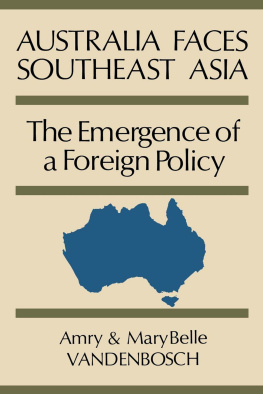Routledge Revivals
Soviet Foreign Policy and Southeast Asia
This book focuses on the activity of the Soviet Union in Southeast Asia and the effects of Soviet policy on the region from 1969 to the time of first publication in 1986. In particular, Leszek Buszynski examines the rivalry between the Soviet Union and China, Soviet presence in Vietnam, and the responsive efforts of surrounding regions towards collective security. U.S. policy in the region is a key consideration, particularly in terms of American attempts to placate China and encourage Japan to assist in the defence of the region. With a concluding assessment of regional trends and possible outcomes, this is an important and valuable work for students and scholars with an interest in the history and politics of international diplomacy in Southeast Asia.
Soviet Foreign Policy and Southeast Asia
Leszek Buszynski
First published in 1986
by Croom Helm Ltd
This edition first published in 2013 by Routledge
2 Park Square, Milton Park, Abingdon, Oxon, OX14 4RN
Simultaneously published in the USA and Canada
by Routledge
711 Third Avenue, New York, NY 10017
Routledge is an imprint of the Taylor & Francis Group, an informa business
1986 Leszek Buszynski
All rights reserved. No part of this book may be reprinted or reproduced or utilised in any form or by any electronic, mechanical, or other means, now known or hereafter invented, including photocopying and recording, or in any information storage or retrieval system, without permission in writing from the publishers.
Publishers Note
The publisher has gone to great lengths to ensure the quality of this reprint but points out that some imperfections in the original copies may be apparent.
Disclaimer
The publisher has made every effort to trace copyright holders and welcomes correspondence from those they have been unable to contact.
A Library of Congress record exists under LC control number: 90146472
ISBN 13: 978-0-415-83120-8 (hbk)
ISBN 13: 978-0-203-76269-1 (ebk)
SOVIET FOREIGN POLICY AND SOUTHEAST ASIA
Leszek Busz y nski
CROOM HELM
London & Sydney
1986 Leszek Buszynski
Croom Helm Ltd, Provident House, Burrell Row,
Beckenham, Kent, BR3 1AT
Croom Helm Australia Pty Ltd, Suite 4, 6th Floor,
64-76 Kippax Street, Surry Hills, NSW 2010, Australia
British Library Cataloguing in Publication Data
Buszynski, Leszek
Soviet foreign policy and Southeast Asia.
1. Asia, Southeastern Foreign
relations Soviet Union 2. Soviet
Union Foreign relations Asia,
Southeastern 3. Soviet Union Foreign
relations 1945.
I. Title
959.053 DS525.9.S65
ISBN 0-7099-3221-9
Printed and bound in Great Britain by Mackays of Chatham Ltd, Kent
ON THE ASSESSMENT OF FOREIGN POLICY
This book is an attempt to assess the aims of and the underlying motives behind Soviet policy towards Southeast Asia since 1969. Moreover, it seeks to identify regional reactions to Soviet policy in the context of enhanced great power interest in Southeast Asia since 1978. The book hopefully fills a void in that many excellent works produced by analysts of Soviet foreign policy cover the Third World in general or specific regions such as the subcontinent of India or the Middle East. Southeast Asia, however, has attracted little attention from these analysts which is a consequence, in many respects, of an understanding of the Soviet scale of priorities in relation to the Third World. Analysts of the international relations of Southeast Asia have produced works which include the role of the Soviet Union in the regional balance of power as a factor in the responses of ASEAN and the United States. These works largely deal with the effects of Soviet policy upon the region and have avoided an examination of its aims and evolution which is not properly their intention. The present work covers both areas of investigation examining not only the evolution of Soviet policy but regional reactions to what has been a consistent Soviet aim to construct a basis for influence in the region.
Southeast Asia was of marginal significance for the Soviet Union until 1978 though interest in Vietnam developed as from 1965 largely as a function of Sino-Soviet rivalry. The Soviet intention with the promulgation of the collective security proposal in 1969 was to establish a position for the unfolding of greater influence within the region to exploit regional fears of China. From 1969, when interest in Southeast Asia was stimulated by impending American withdrawal from Indochina, until 1978, Soviet policy was characterised by a series of manoeuvres intended to establish a regional political presence which would confer upon the Soviet Union a position of commanding advantage. In 1978, however, upon the conclusion of the treaty with Vietnam, the Soviet Union emerged as a major actor in the region and gained access to naval facilities at Cam Ranh Bay.
The year 1978 was a watershed in international relations, since by emerging as an actor in Southeast Asia the Soviet Union was given a strategic advantage over both the United States and China that signalled a change in the power relations between the great powers. The strategic benefits derived from entry into the region have attached to it a significance for the Soviet Union in terms of the execution of naval strategy that belies the earlier American indifference towards Southeast Asia during the Carter administration. Southeast Asia has become a region of strategic interest for the Soviet Union which is a reflection of a growing conventional capability to exert global influence developed during the Brezhnev era. Correspondingly, Southeast Asia is no longer a region that can be ignored by the United States and has assumed an important role in an American-sponsored strategy of containment of the Soviet Union.
The perspective adopted in this work has been a regional one to balance the proclivities of the global strategists in Washington who tend to view Soviet intervention into the region purely in terms of its impact upon the superpower relationship. An exclusive preoccupation with global factors can result in the consequent neglect of regional reactions to the roles of the great powers within Southeast Asia and an inability to anticipate actions that may be otherwise surprisingly inexplicable. Moreover, for the Soviet Union ASEAN has a special role and consistent efforts have been made to obtain ASEANs endorsement of the Soviet regional presence as a way of overcoming the isolation imposed upon it over the Kampuchean issue. The Soviet focus upon regional actors is a response to the obvious fact that the Soviet Union will avoid challenging its great power protagonist directly and will seek to undermine its regional position by playing upon ASEANs fears. The regional focus of the work is a consequence of immediate priorities evident in Soviet policy and a result of a Soviet expectation of American vulnerability.
How does one identify foreign policy aims? The problem for foreign policy analysis is to ascertain not only the domestic inputs into the decision-making process but to assess priorities and to distinguish stated or public aims from those which are actually pursued. A related problem is the need to distinguish actual aims from those attributed to a countrys foreign policy by an outside observer or group of observers. Foreign policy is ultimately an expression of domestic political systems or is grounded in policy-making processes that are responsive to domestic political forces. Public aims can differ significantly from actual aims as the need emerges to conceal motives as part of the effort to gain wider acceptance or to be assured of internal legitimacy. To that extent, the analyst is compelled to assess foreign policy conduct and to note and to provide explanations for discrepancies between performance and public aims. An emphasis upon conduct alone, however, engenders the danger of wrongful attribution in which case an external observer reads his own cultural preferences into the foreign policy performance of a particular state and constructs a framework for analysis which is really the product of his own cultural background. To minimize this danger the analyst is compelled to appreciate foreign policy values of other cultures and to assess declaratory aims according to the political context of the state concerned. Foreign policy analysis, in this sense, cannot be a science since the scientific approach and the urge to tidy up the process of decisionmaking of other cultures can itself be seen as a cultural imposition as distinctions are made which may have no real cultural or social basis. Analysis in this sense, is more properly a scientific art.








